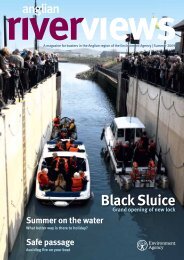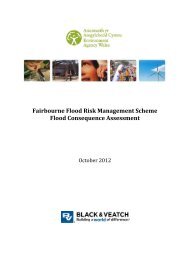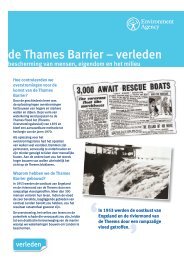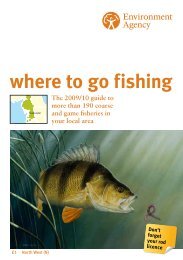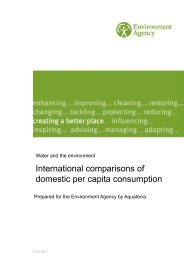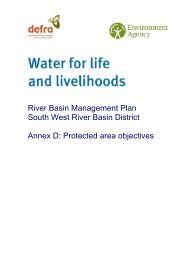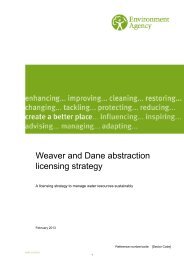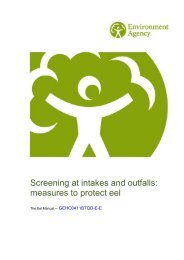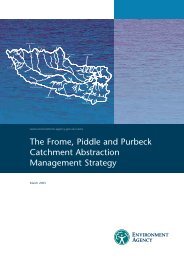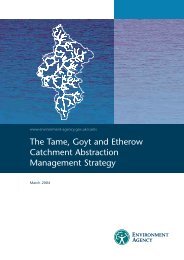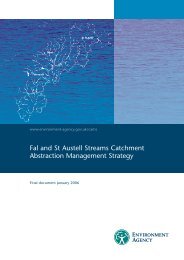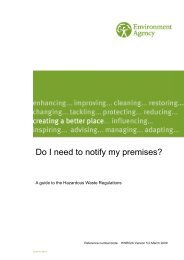Karenia mikimotoi
Karenia mikimotoi
Karenia mikimotoi
Create successful ePaper yourself
Turn your PDF publications into a flip-book with our unique Google optimized e-Paper software.
Executive summary<br />
The purpose of this report is to review the evidence in the literature regarding potential<br />
human health risks in bathing waters in the UK posed by phytoplankton, cyanobacteria<br />
and macroalgae in relation to the Directive 2006/7/EC of the European Parliament and<br />
of the Council of 15 February 2006 concerning the management of bathing water<br />
quality and repealing Directive 76/160/EEC:<br />
Article 8<br />
Cyanobacterial risks<br />
1. When the bathing water profile indicates a potential for cyanobacterial proliferation,<br />
appropriate monitoring shall be carried out to enable timely identification of health risks.<br />
Article 9<br />
Other parameters<br />
1. When the bathing water profile indicates a tendency for proliferation of macro-algae<br />
and/or marine phytoplankton, investigations shall be undertaken to determine their<br />
acceptability and health risks and adequate management measures shall be taken,<br />
including information to the public.<br />
Terms of reference:<br />
To review existing scientific knowledge of marine macro and micro algae, and the<br />
potential health risks posed by direct contact, in relation to bathing waters and<br />
recreation.<br />
To identify serious gaps in existing knowledge which would compromise the EA’s ability<br />
to comply with Articles 8 and 9 of the 2006 Directive.<br />
If gaps are identified to outline the work necessary to rectify this.<br />
The work is not to include an evaluation of -<br />
the aesthetic impacts of blooms at bathing waters;<br />
the risks caused through the vectoring of shellfish toxins via fish or shellfish.<br />
Conclusions<br />
Based on a review of the extensive literature on potentially harmful algae, risk<br />
assessments have been made primarily with reference to the Environment Agency’s<br />
list of ‘notifiable’ and nuisance bloom-forming phytoplankton and cyanobacteria. An<br />
assessment has also been made of possible hazards presented by marine macroalgae<br />
(seaweeds). These assessments are summarized in the table below.<br />
The risks to human health due to short-term contact, aspiration (ingestion) or inhalation<br />
(of aerosols or dry particles) with marine phytoplankton, including toxic genera, that<br />
presently occur in UK waters are considered to be generally low, as is contact with<br />
seaweeds. In contrast, the risks to human health, either via contact, aspiration or<br />
inhalation, presented by blooms of freshwater cyanobacteria is assessed to be high.<br />
Research requirements as regards human exposure to cyanobacteria in recreational<br />
and other waters as identified by the international community have been highlighted.<br />
iv A Literature review of the potential health effects of marine microalgae and macroalgae



